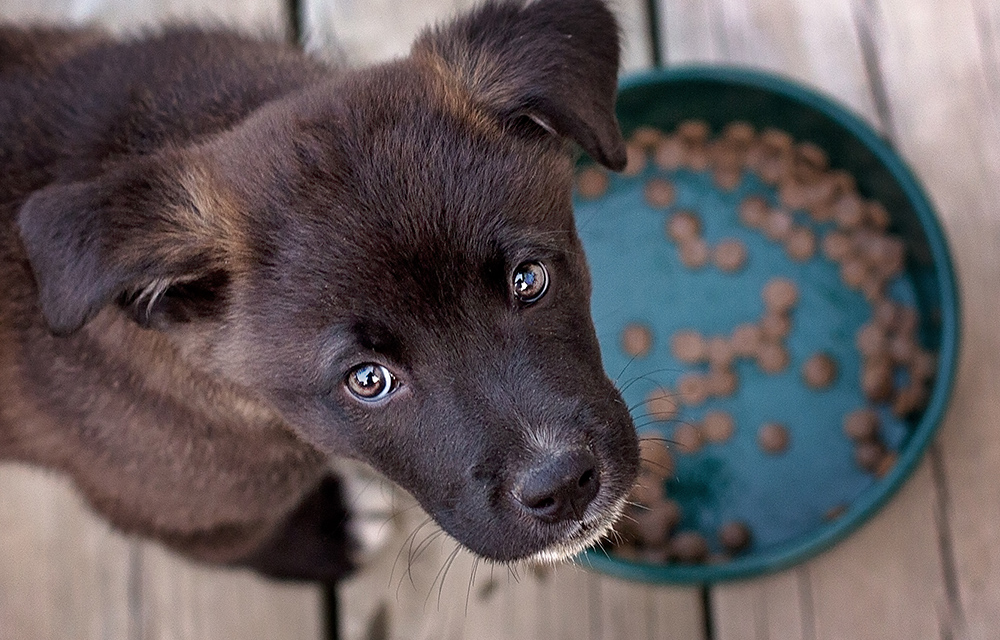Overfeeding pets

Tips for Transitioning Your Dog to a New Food
Commonly, a dog food transition schedule can be about 7 days long. Some say this transition schedule should be about 10 days but is good to slow down the change so your buddy will digest it and habitually eat it in a healthier way. These days the pet owners use a food transition chart to add or remove the old food from pets’ diet. However, the optimal plan for changing your pet’s diet relies on its digestive system. If your pet exhibits symptoms of digestive disturbance or even food rejection, you must visit veterans. Pets are so sensitive, so their bodies are, pet owners have to tackle them accordingly. All of it relies on the pet and its condition.
Lifestyle
Puppy growth needs more calories, protein, and a balanced diet than an adult dog. But they start eating adult dog food at about 12 months old. See your veterinarian to be sure your puppy is ready for the change before you feed it an adult dog diet. Usually, with fewer calories and more antioxidants/fatty acids, this diet is designed to meet the particular needs of older dogs.
Food Sensitivities
If your veterinarian finds that your dog has food sensitivity, they could advise a specific diet to enable your dog to avoid the items they are sensitive to. Whether your veterinarian has advised changing your dog to a limited-ingredient diet or a speciality diet needing pre-authorization from the vet, you must closely consult your doctor to decide the best approach to introduce the new food.
Weight issues
Does your energetic dog need to gain or lose weight? If your veterinarian shows concern about your dog’s weight—either overweight or underweight—you might choose to change their diet. Special weight-control dog diets enable healthy weight loss from those additional pounds.
Medical considerations
Unfortunately, pets occasionally acquire different needs that call for a different diet. If your dog has kidney problems, diabetes or any kind of problem for instance, you can consult with your veterinarian to identify the diet most likely to fit their health issues.
Rules For Transitioning Your Dog To A New Food
Now, about the “how” of things. Suddenly, changing dog food might lead to gastrointestinal problems like diarrhoea, vomiting, and upset stomach. To help your dog avoid experiencing these symptoms, you should thus approach things more gradually and allow a transition period. Generally speaking, you should begin mixing the new food gradually. The transition has a formula that follows:
- Day 1: 25% new, 75% old food
- Day 2: 30% new, 70% old food
- Day 3: 40% new food, 60% old food
- Day 4: 50% new, 50% old food
- Day 5: 40% old, 60% new food
- Day 6: 75% new, 25% old food
- Day 7: 100% fresh cuisine
During the first 7 days, monitor how your pet responds to their diet. As you change dog food, ensure your dog is especially watched for any changes in behaviour, appetite, activity level or GI problems. Following the new food, the change is slower if your dog exhibits GI symptoms, including diarrhoea and vomiting. And discuss these issues with your veterinarian should they continue. Sometimes, even a moderate change might not be sufficient; in such circumstances, you must choose another food for your dog that fits them more.
Why Do Some Dogs Find Changing Their Diet Difficult?
If your dog sniffs and turns away to the new food, you must understand this hint that he does not like it. Including a new smell in their food can first cause reluctance. It’s not only about flavour; it’s also their natural reaction to anything alien in their bowl.
Sometimes, this approach is easier if one keeps with the same manufacturer. Businesses often keep a stable ingredient foundation throughout several products, meaning fewer entirely new components for your dog’s system to adjust to. Even small changes can affect your dog’s response to the latest food, mainly if they are fussy.
Common Picky Dog Breeds
Like humans, some dog breeds are picky eaters. The most common are Pekingese, Cocker Spaniel, Boston Terrier, Maltese, French Bulldog, Bichon Frise and pug. If you are a parent of one of these dogs, you have to handle it calmly.
Essential Benefits Of Transitioning Your Dog To A New Food
Short- and long-term advantages abound when you feed your dog a rotational diet. Rotation feeding changes the protein and form of food you are providing. This can be going from wet to dry meals and chicken to fish. Changing the meal rotation for your dog will expose them to fresh tastes and textures to explore.
Nutrients content
Different substances, as might be expected, offer different nutrients. Rotating your dog’s food helps you to vary all the essential nutrients that maintain their health. Various formulae call for other minerals, vitamins, amino acids, etc. This keeps your dog in good general health and on a balanced diet. Every recipe will be able to provide your dog with vital minerals, which are lacking in the last one.
Eagerness to eat something new
Humans can visit a store and purchase anything our taste receptors guide us to. We have different dinners every night, and some things quickly bore us. Though we rarely consider it, dogs can grow bored just as humans can! Your dog will taste diverse flavours and textures from rotating feeds. This might keep them fascinated with the food you are providing them.
Allergies
Pet owners perform study and select a meal they think would be the ideal one. Yet, sticking to one food can lead to specific problems. Overlong use of the same protein for your dog will finally cause allergies. This is most usually evident in dry, itching skin. Rotating meals stops this as the components aren’t in the body long enough to cause an allergy. Selecting the correct dog food for your puppy can be difficult. It can be challenging to decide which one your dog would enjoy most. When selecting any dog food label, be familiar with the components. Read the ingredients carefully on the back side of the package. Changing to a high-protein diet too fast can momentarily overwhelm their digestive system. This will cause symptoms, including diarrhoea, gas, and stomach pain. Thus, this is especially true if the new cuisine boasts far more protein than their former diet. Their approach requires time and tools to adjust to the new formula.
“Conclusion”
Rotating food should be entirely based on your dog and his tolerance. One good rule to abide by is his bag alterations. Start changing into the next before your food bag runs empty. This provides your dog with enough time for every food rotation. Please speak with your veterinarian first; they will be able to offer you the most significant information and guidance.


